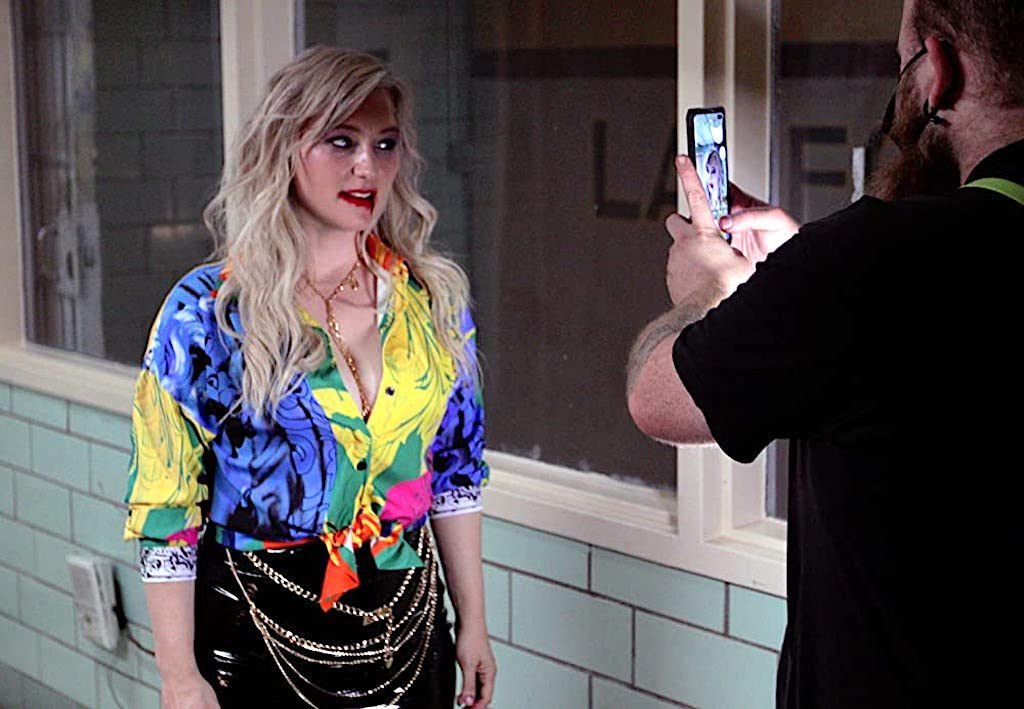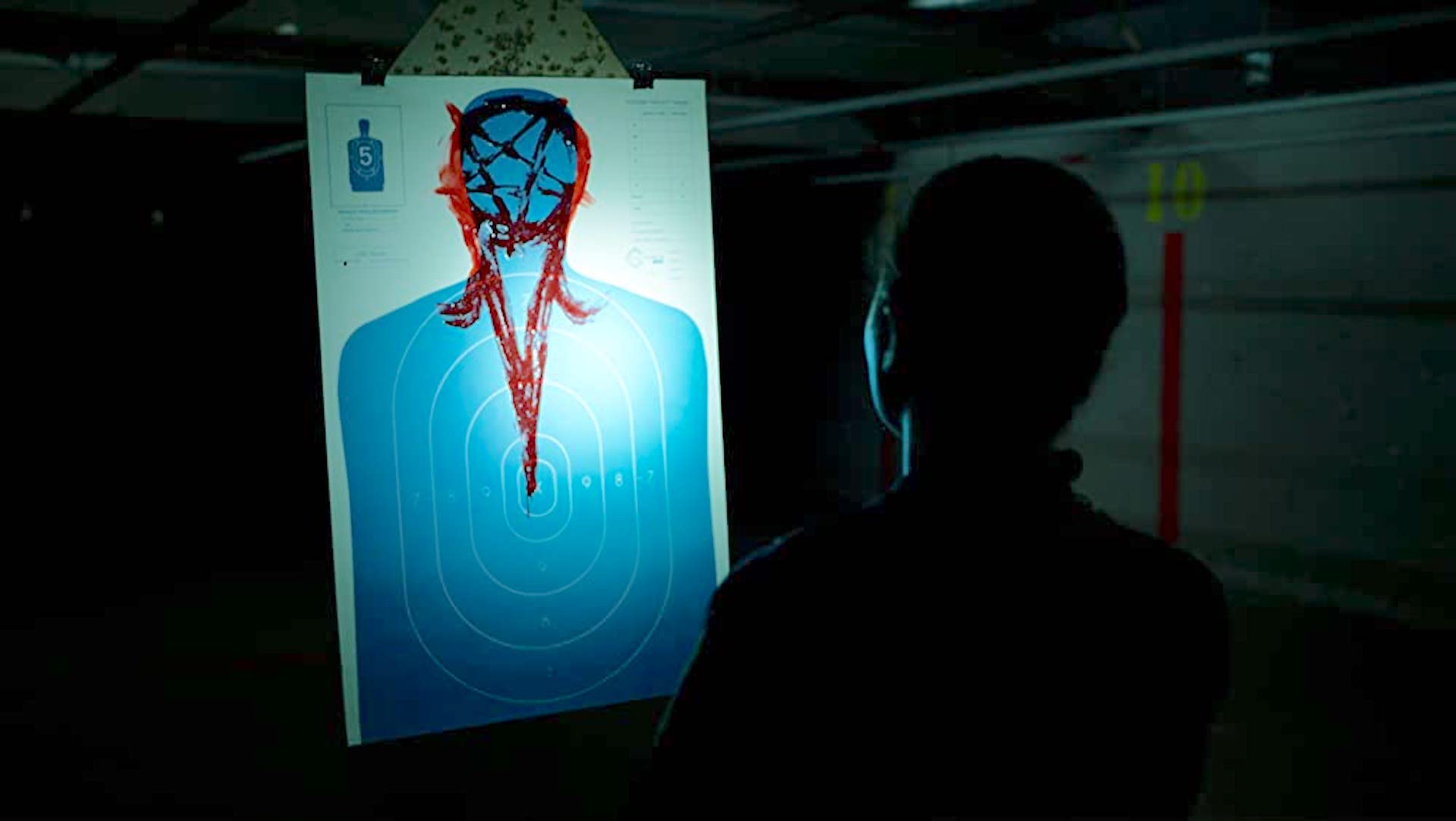It’s not often a writer/ director decides to remake his own film, especially one that has experienced success in its own right. In fact, Anthony DiBlasi is the first American director since Leo McCary in the 1950s to do so. But, back to the drawing board he went with co-writer Scott Poiley to re-envision 2014’s Last Shift.
Far from any interest in merely a shot-for-shot remake, the two wanted to create a different, more mysterious, story that would still pay homage to the original. Malum is about a decommissioned (and haunted) police station and the lone officer with a dark family history tasked with surviving the night. Utilizing practical FX over CGI, it is described as a “relentless, adrenaline-fueled, bloody cult nightmare”. DiBlasi spoke to Creative Screenwriting Magazine about the film and all that is involved in revisiting your own material almost a decade later.
Tell me about remaking Last Shift. What was different this time around and what did you want to change story-wise?
When Scott and I wrote Last Shift, it was a very simple story that was meant to put people in a sort of rickety, fun house, haunted house carnival ride for ninety minutes. And it was very light on narrative, if you will… but it was designed that way, and a lot of horror audiences appreciate that.
In the first film, the lead character, Jessica Loren (Juliana Harkavy) is very much a person who is in the wrong place at the wrong time. Knowing that, we decided to reimagine the movie and it all came down to rewriting the script, really. Why are we doing this and why would we do that?
A lot of people asked if it felt like we were remaking the same movie, and to us it really didn’t because we changed the motivation of the lead character completely. She’s there to solve the mystery. She wants to be there, and she became a police officer just so she could solve this mystery. That immediately changed things on page one for us and it never felt like we were making the same movie again because of that one choice.
Also, the first movie had very little back story on the villains of the film. That was really the main thing I wanted to explore, to give them their own mythology and something that people hadn’t seen before… phrases that they hadn’t heard before. To just give a fresh take on this cult and give people who liked the first film something that was completely different.
What was important to retain from the first film?
There were a few key scares that I think worked really well. For Scott and I, it was always about a new audience, the people who hadn’t seen the film yet. We wanted to give them the best experience possible. That was the main focus for me as I was directing, knowing that something worked really well in the first movie and wanting the people who didn’t get to see it to be able to experience it in the new one.
It’s been almost ten years since Last Shift. How would you say you’ve changed as a filmmaker and have you seen the horror movie industry change as well?
I think your dollar doesn’t go as far as it did years ago! That was a big thing we learned on this one.
I think if you’re working with the right people, you can get really excited about solving the problems that can come up. It feels good to solve a problem when you’re on set or in pre-production or even through the whole process. But you can get carried away in it. As a producer, I always thought I was a good problem solver, especially when working with writers. When you don’t have the budget for certain things or have to trim a location or a day, you can really get caught up in trying to figure out how to make it work. On the first movie, we had such a limited budget that we designed everything with that size in mind.

Anthony DiBlasi
But on this movie, several pictures and ten years later for me, I was less willing to compromise. I had more of the approach of, “You know what? I could solve this problem, but I think this is very important to the script… we wrote this for a reason.” I wanted to figure out how to do things the way we intended to do them – and figure that out in the budget, not on the page.
Let’s talk about the opening scenes and how they set the tone for the rest of the film.
I think it’s almost tradition for horror movies to open with a teaser. This is the scary beat at the beginning, now let’s get into the narrative. We knew most people would be expecting that and because we made a version of this movie before, we wanted to up the stakes as soon as possible.
As a writer and having directed other films, you’re also riding that line of, “let’s not fatigue them too early on.” But we felt that this was so integral to the story. Fans of the first film wouldn’t have seen it, and it would set a totally different tone. And for the people who aren’t familiar with the first one, this movie does completely stand on its own.
But with horror and thrillers especially, it’s always about managing the expectations of the viewer. It’s a fun give-and-take, and you can almost have that wink and a nod as you’re making the movie. I think that there’s this sort of collaboration with the audience; even though the movie’s done, they’re watching it and feeling like they’re part of the process in a way.
The Manson family. Assault on Precinct 13. Can you speak to some of the influences on your story?
I love the film Sinister. It has such a great vibe. And what’s fascinating with that movie is that it doesn’t have a ton of practical effect. It’s the tone that’s just so unnerving. It’s a mystery and I love it.
That was a big thing with us, we wanted this to be a mystery. So I’d say that Sinister was an influence on this film. I’d say that the Evil Dead remake was another influence on this film. The other Evil Dead movies are more tongue in cheek and I really enjoy the remake because it’s not. The effects are more in your face.
So those were two early influences. I think the Manson element was one of the biggest challenges writing this that Scott and I honestly didn’t crack until maybe a couple of weeks before pre-production. I think it was our last draft. We had to think, “OK, who is this family? What do they stand for?” Because to me, the cults that are infamous because of what they did are very short-lived. They burn out very quickly. With this film, we were setting up a back story that spans almost thirty years. Who would the Manson family be if they were around for thirty years? They would be a much different thing, so it was a challenge to figure out what that would feel like. They had to have a deeper mythology. It wasn’t until that final draft before that a lot of those things came together.
How did you approach any research when it came to mythology and lore?
It took a long time to crack that. In the first film, we pulled from demonic things that had been written about before. With this, I really wanted to go in the Lovecraft direction and just make up our own mythology so that it wouldn’t feel stale but would still have that familiarity to it where people would wonder if it a real thing.
We did a lot of research. We went back to the Latin language and to the Greeks. It was all just feeling like we had heard it all before. So I looked at a lot of teachings. You start to dig into things like the Illuminati and the mythology around that.

Marigold (Natalie Victoria ) Photo by Steven Shea / Welcome Villain
That was probably the stuff that I felt was most influential. The Temple Baron actually came to me in a dream. It wasn’t so much the image of it. It was like something was talking to me. It said, “We are the temple barons, listen to our plans”. I woke up and immediately wrote it down. That was a couple of years before. So I just saved that and it felt appropriate for this film.
You write down these little phrases and notes that you like, and it just comes together in those final stages. We made all of it up, but it was really Lovecraft that I took that inspiration from. Let’s just create a world that’s our own and gives us room to continue and create more characters.
Tell me about working with Clive Barker.
I met Clive right out of college. I attended Emerson College in Boston and transferred to a program they had in LA. I was interning at Marvel Studios. They had just finished the Tobey Maguire Spiderman so they didn’t have a lot going on at the time. It was a very quiet office. I had extra time and I didn’t want to waste it. I loved horror and practical effects, and I had heard Clive talking on an A Nightmare on Elm Street box set that came out around that time. I loved how he talked about horror. It was a much more personal experience. He was a novelist first and foremost, so his approach was different. We seek out horror to get as close to death as we can, but in a safe way. The things he talked about were what always affected me. So I reached out to my counselor at the school and asked if there were any horror internships available. Clive was on a list, so I connected with his producing partner at the time. I was able to get a meeting. We got along and I just got thrown into the fire very quickly because they were a small company. I started as an assistant and was developing a few months later.
I was very lucky in that way. When I started working for Clive, I was very familiar with his films but had never read any of his novels. I just started reading everything of his, ingesting his style, and quickly learned his language, which still sticks with me.
He was always frustrated when writers would adapt his work. The Thief of Always was one of my favorites of his. I just decided to adapt it, I didn’t even ask him first. That was the first legitimate screenplay I’ve written. I just wanted to be faithful to what he had done on the page. I handed him this 120-page script and he loved it.
That was my first feeling of “I can do this, I can write”. And have someone like Clive say, “I appreciate what you did.” With horror, I don’t want to just scare people, but hopefully make them feel something emotionally. I got that from Clive. He talked a lot about letting horror affect people emotionally. We don’t just seek it out because we’re looking for blood and guts; we’re looking for a connection. Either to our fears so that we can face those fears, or to our deepest hurts. So I think that whenever I write a horror script, I always try to give something that has that emotional tug.

